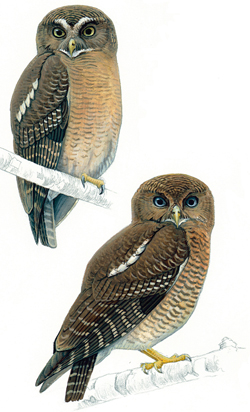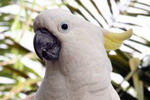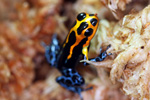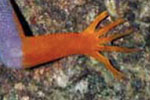Two new owl species have been described in the Philippines, reports Inquirer News.
The species were discovered after years of research by ornithologists who analyzed the calls of what was originally thought to be a single species of owl, the Philippine hawk-owl (Ninox philippensis), which is now known to represent seven closely-related species.
“More than 15 years ago, we realized that new subspecies of Ninox hawk-owls existed in the Philippines,” said Pam Rasmussen of Michigan State University, who is the lead author of the Journal of Asian Ornithology’s Forktail paper that describes the new species. “But it wasn’t until last year that we obtained enough recordings that we could confirm that they were not just subspecies, but two new species of owls.”
 Two new species of owls have been discovered in the Philippines. Top left: Cebu Hawk owl. Bottom right: Camiguin Hawk owl. Courtesy of Oriental Bird Club: original painting by John Gale. |
The first owl species, the Camiguin Hawk-owl (Ninox leventisi), is found only on Camiguin Sur, a small island off the coast of northern Mindanao. The second species is called the Cebu Hawk-owl (Ninox rumseyi). It was originally thought to be extinct due to widespread deforestation on the island of Cebu.
“This species [the Cebu Hawk-owl] is possibly endangered. It can only be found in small patches of forests in Cebu,” biologist Lisa Marie Paguntalan of the Philippine Biodiversity Conservation Foundation Inc. (PBCFI) was quoted as saying by Inquirer News.
Other hawl-owls formerly classified under the Luzon Hawk Owl (Ninox philippensis) but now elevated to species status include the Mindoro Hawk Owl (Ninox mindorensis), the Romblon Hawk Owl (Ninox spilonota), the Mindanao Hawk Owl (Ninox spilocephala) and the Sulu Hawk Owl (Ninox reyi).
The researchers also announced a revision of the Philippine Scops Owl, elevating three owls formerly considered subspecies to species status: the Luzon lowland Scops-Owl (Otus megalotis), Negros or West Visayan Scops owl (Otus nigrorum) and the Mindanao lowland scops-owl (Otus everetti).
The Philippines have lost roughly 90 percent of its primary forest cover due to logging and agricultural expansion.
CITATION: LISA MARIE J. PAGUNTALAN, PHILIP GODFREY JAKOSALEM, MARKUS LAGERQVIST, JONAS NORDIN, GEORGINA FERNANDEZ, MICHAEL DE LA CRUZ & AGATON BAYSA. Bird observations on the Zamboanga Peninsula, Mindanao, Philippines. Forktail, number 27, August 2011.
Related articles
Solomon Islands’ export of ‘captive-bred’ birds deemed to be a farce

(08/14/2012) Over 68,000 birds listed on CITES (Convention on International Trade in Endangered Species of Wild Fauna and Flora) were exported from the Solomon Islands during 2000-2010 according to a recent report by wildlife-monitoring NGO, TRAFFIC. Although the majority of birds were listed as ‘captive-bred,’ the report raises the question of whether these species were not in fact taken from the wild.
Scientists discover beautiful new insect species after stumbling upon photos on Flickr
(08/09/2012) Scientists have discovered a previously unknown species of lacewing insect after stumbling upon a series of photos posted on Flickr®, according to a paper published in the journal ZooKeys.
Beautiful new bird discovered in Peruvian cloud forest
(08/07/2012) Four years ago in a remote cloud forest in Peru’s Cerros del Sira mountain range, three recently graduated students from Cornell University discovered a never-before-recorded species of black, white, and scarlet bird. Now described in the scientific journal, The Auk, the bird has been dubbed the Sira barbet (Capito fitzpatricki).
The dark side of new species discovery

(12/21/2011) Scientists and the public usually rejoice when a new species is discovered. But biologist Bryan Stuart has learned the hard way that the discovery of new species, especially when that species is commercially valuable, has a dark side-one that could potentially wipe out the new species before protections can be put in place. Stuart has discovered 27 species unknown previously to scientists – so far. That includes 22 species of frogs, three types of snakes, and two salamanders. His experience with one of these, a warty salamander from Laos with striking markings (Laotriton laoensis), opened his eyes to a dark side of scientific discovery: commercial overexploitation before protections are in place. Shortly after Stuart described the previously unknown species Paramesotriton laoensis in a scientific paper published in 2002, commercial dealers began collecting this Lao newt for sale into the pet trade. In essence, the dealers used Stuart’s geographic description in the paper as a “roadmap” to find the rare newt.
Photos: 208 species discovered in endangered Mekong region in 2010

(12/14/2011) Last year researchers scoured forests, rivers, wetlands, and islands in the vanishing ecosystems of the Mekong Delta to uncover an astounding 208 new species over a twelve month period. A new report by the World Wide Fund for Nature (WWF) highlights a number of the new species—from a new snub-nosed monkey to five new meat-eating pitcher plants to a an all-female, cloning lizard—while warning that many of them may soon be gone as the Mekong Delta suffers widespread deforestation, over-hunting and poaching, massive development projects, the destruction of mangroves, pollution, climate change, and a growing population.
World’s bluest lizard in danger?

(03/07/2007) High above the forest floor on the remote Colombian island of Gorgona lives a lizard with brilliant blue skin, rivaling the color of the sky. Anolis gorgonae, or the blue anole, is a species so elusive and rare, that scientists have been unable to give even an estimate of its population. Due to the lizard&spod;s isolated habitat and reclusive habits, researchers know little about the blue anole, but are captivated by its stunning coloration.